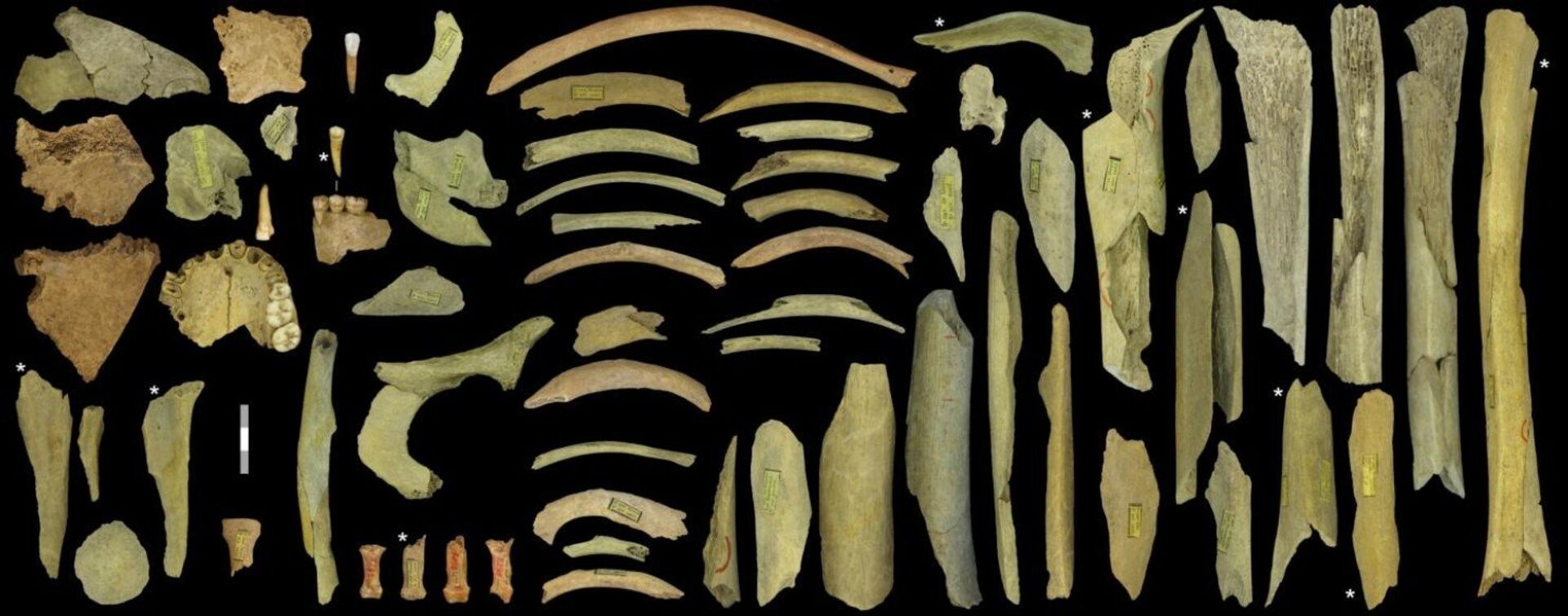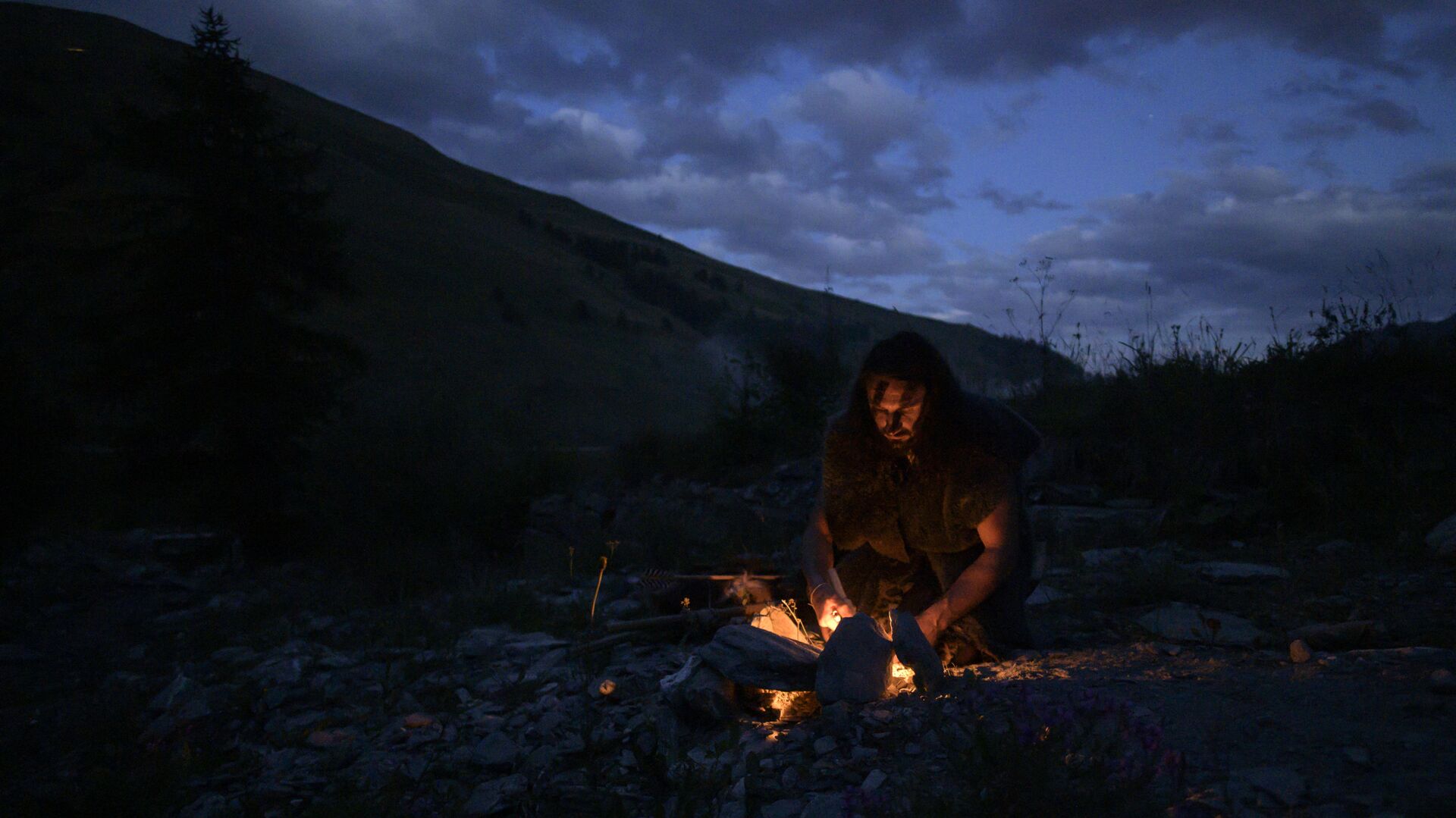A cave in Italy that was once sealed by an ancient landslide or earthquake has yielded a stunning discovery of ancient human remains.
Italian archaeologists have unearthed the bones of nine Neanderthals, include skullcaps and broken jawbones, in the grotto about 100km south-east of Rome, according to the Italian Culture Ministry.
Circeo, Grotta Guattari, nuove incredibili scoperte: trovati reperti fossili di altri 9 uomini di #Neanderthal. Oltre a iene anche resti di elefante, rinoceronte, orso delle caverne e dell’uro, grande bovino estinto. https://t.co/N7uLONLYTr ▶️ Il video: https://t.co/iBZuVyhmBo pic.twitter.com/zVSmXDB4zH
— Ministero della cultura (@MiC_Italia) May 8, 2021
All the fossils found in the Guattari Cave in San Felice Circeo are believed to be adults - seven adults and one female - with one possibly a youth, according to scientists from the Archaeological Superintendency of Latina and the University of Tor Vergata in Rome.
Remains of nine Neanderthals found in cave south of Rome Experts believe the individuals lived in different time periods. Some bones could be as old as 50,000 to 68,000 years. More rubbish to discredit the Bible . Bones still in tack after 50,000 years what BS . pic.twitter.com/1SySCwP2gV
— joe soap (@joesoap50844982) May 8, 2021
Our closest ancient human relatives are believed to have lived in different time periods. Some bones are estimated to be as old as 50,000 to 68,000 years, with the most ancient ones are suggested as dating back 100,000 years.
The cave is famous for having afforded archaeologists a glimpse into mankind’s distant past when workers discovered, by chance, fossils of Neanderthals here in 1939.
Anthropologist Alberto Carlo Blanc is credited with the Neanderthal skull discovery stemming from that accidental encounter. Excavations resumed here in 2019, involving a part of the cave that hadn’t yet been explored.
Remains of nine Neanderthals discovered near Rome - YouTube / https://t.co/wxgXmlBVZh
— neanderthal yabuki (@nean) May 9, 2021
"Together with two others found in the past at the site, they bring the total number of individuals present in the Guattari Cave to 11, confirming it as one of the most significant sites in the world for the history of Neanderthal man," the ministry said.
Francesco Di Mario, who led the excavation project, said the fossil find represented a Neanderthal population in the area that was likely quite large.
Mario Rolfo, professor of archaeology at Tor Vergata University, hailed the “spectacular find”, as researchers discovered traces of vegetables, remains of rhinoceroses, giant deer, wild horses and hyenas.
Most of the Neanderthals are assumed to have been mauled by hyenas, who dragged the ancient hominids to the cave where they had made their den.

“Neanderthals were prey for these animals. Hyenas hunted them, especially the most vulnerable, like sick or elderly individuals,” said Rolfo.
The Culture Ministry’s statement says that many of the bones showed “clear signs of gnawing".
Before meeting their death between the jaws of the ferocious predators, experts believe that the Neanderthals might have used the cave as their home. The researchers shall now be analysing the DNA of the individuals to better understand how they lived. Meanwhile, preliminary analysis of dental tartar suggests their diet was varied, primarily consisting of cereals.
“It is an extraordinary discovery that the whole world will talk about. These findings will help to enrich studies on Neanderthals,” said Italy’s culture minister, Dario Franceschini.
100,000-year-old Neanderthal footprints show children playing in the sand https://t.co/h0cOxVYlqp pic.twitter.com/NuhKQoAPri
— Live Science (@LiveScience) April 13, 2021
Neanderthals, who crafted complex stone tools, painted jewellery, and used to adorn caves with their ancient artwork, populated Eurasia from the Atlantic coast to the Ural mountains between about 130,000 and 40,000 years ago. After that, all physical evidence of them vanished, although part of them lives on in the DNA of modern humans despite most of our ancestors arriving from Africa via the Middle East more recently.


